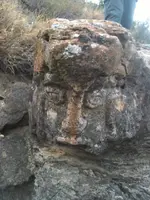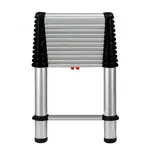Caballo notes - reply to old post
That would be cool and I think we'd all like to see your pics. I've posted everything I know about it. Hopefully someone with more details will step forward.
Don't get on here much. However, recent finds have renewed my interest and "belief". Replying to an old post may be bad form, but...
Regarding the Caballos: all to the best of my knowledge and of course my opinion:
1) Rabbit or mule ears north of Longbottom (aka Lead) canyon. Decent copper deposits there, and interesting area for a geology nerd. Spur road goes right to the ears. It's East of Ash spring. Pictures are somewhere, but not at hand at the moment.
2) Tavern was still open last I drove past (a few months ago)
3) Access West side from T or C bridge East of town over the river, OR ford the river at Palomas, OR drop S. of tavern and turn East at the radio towers and work your way over to the underpass on the dirt farm roads.
4) Cable aka Bat Cave Canyon. Not sure I think anything is or was there. Cable was still there years ago in the box canyon but I don't spend much time there. Cleto springs is name I know for the old Noss-related camp somebody else maybe spelled "Clato".
5) Land status on some maps is wrong for the top of the mountain, in particular. Most all the area is BLM. Only private area other than Gordon's cabin and some other obvious ones is on the Shandon placers and it's unsigned, etc.
6) Only claim I found near the known gold zone for my buddy's old friend Don Fingado is at the East end of the Shandon. Could be more.
7) LOTS of interesting stuff all over those mtns, and locals know of SO much that is gone. I suspect that to have found a lot of what I have seen in old pictures, on shelves, and in drawers here and there, etc., recovery could have been a much more realistic prospect. Now, so many busy hands and feet and even a few apparent fakes. There are still lonely corners, some I never hear about from anybody else, that are among the most interesting and compelling.
8) As a matter of general logistics, and in line with so many old maps, I like the Caballos as a lot more practical of a location than VP.
9) That said, there was a practical route E-W through Hembrillo used since antiquity, so maybe I just like the pavement too much.
10) Carry 100 lbs miles across rough ground, dig a hole, clean out a cave, mine some rock, try to move without being seen, etc. and I think it helps understand the original emplacers, as well as the modern recoverers, e.g., Willie, Doc, etc. No substitute. Also, what would YOU do to guarantee your buddies across the ocean could find the right place in a land of nothing without your help a decade or two down the line? - 'cuz you sure as heck were NOT EVER coming back to the Apache-infested wasteland of doom no matter what!
11) Lots of gold nearby. Hillsboro is largest placer in S. half of state, a little in the Organs, plenty in the deep Black Range, but logistically tough to get out. Not to mention the San Mateos, some by Chloride, etc. Lots of Silver, too, and the easy self-fluxing Galena type. Bridal Chamber up over the hill, too. I always feel better hunting for metal when there's a natural source neaby. And Santa Rita, Pinos Altos, the Burros, Mogollon, etc. all up over the pass as well.
12) Note the old Presidio at San Diego crossing has been on the maps for a very long time. Las Cruces was just "Rancheria" if they mentioned it at all. Dona Anas used to be Robledo Hills vs. Robledo Mtns. across the rio. Why a presidio there with such a lonely stretch of nothing between El Presidio del Paso del Norte (vs. de Las Juntas) and Santa Fe? What was there to protect? I see others peg Los Caballos as "del Perillo", but I just don't see that on all the old maps I have - been Caballos for a long time, AFAIK, but I try to have a 1/2 closed mind (would not want to be 1/2 open and have things fall out).
Good luck.









 The sun symbols actually agree with that, even though all the other important geography and ground signs I have seen so far do not. Oh yeah, and all I came up with for the ankh is that it may be associated with Venus. I'm not a star-guy so I have no idea how to use that even if it is relevant. Maybe an astronophile could help? Can that disambiguate N-S/E-W for us?
The sun symbols actually agree with that, even though all the other important geography and ground signs I have seen so far do not. Oh yeah, and all I came up with for the ankh is that it may be associated with Venus. I'm not a star-guy so I have no idea how to use that even if it is relevant. Maybe an astronophile could help? Can that disambiguate N-S/E-W for us?
